Wittenberg
| Wittenberg is Martin Luther country and the area is devoted to its adopted son. With the 500th anniversary of the Protestant Reformation coming next year, in 2017, the city is gearing up for a huge influx of tourists, so we saw no shortage of construction along the cobbled streets. | |
 |
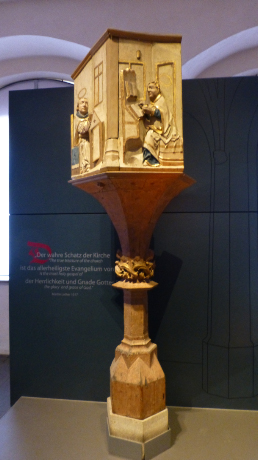 |
| Luther began, of course, as a Catholic monk and this is the monastery in which he lived and began to develop many of his new ideas. It is now the Luther Museum. | Luther was a regular preacher at the local church and would have given his sermons from this pulpit. He was a small man but with this pulpit he towered over the people. |
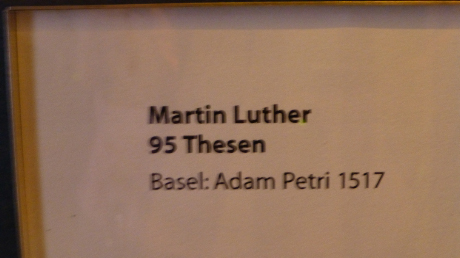 |
 |
| The first printing of Luther's 95 Theses in 1517. The theses were intended to be points of debate for Catholic theologians but eventually morphed into a series of statements of what people saw as wrong with the Catholic Church. The use of the new printing press allowed the ideas to spread quickly. | |
 |
 |
| Luther believed that people should be able to read the Bible themselves, rather than having it transmitted through a priest, and worked on a German translation. His vocabulary became the standard for the modern language. | The large hall in the Luther House (inside the monastery) where Luther and his wife Katharina von Bora entertained and where much of the history of the Reformation was put into motion. |
 |
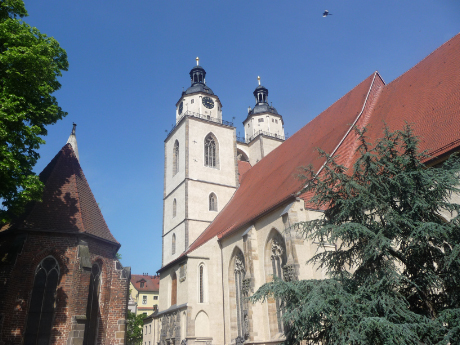 |
| Tourism is nothing new in Wittenberg--Peter the Great of Russia signed his name on the door frame in the early 1700s. | St. Mary's Church, where Luther preached first as a Catholic priest and later as a Lutheran minister. it is, therefore, regarded as the mother church of the Reformation. |
 |
 |
| The altarpiece of St. Mary's Church, by Lucas Cranach, an important (and prolific!) painter of the period and friend of Luther. The panels show Luther's new theories of Christianity in contrast with those of the Catholics. | The famous door where Luther nailed his 95 Theses on October 31, 1517. Unfortunately, the door was replaced in the 18th century with a bronze one and no trace of the original wooden door remains. |
 |
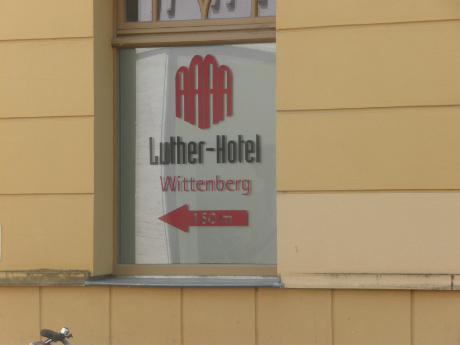 |
| The old town of Wittenberg is similar to many other German towns, retaining the cobblestone streets, plain shop fronts, and dominance of the local church. | But you always know that you are in Lutherland. |
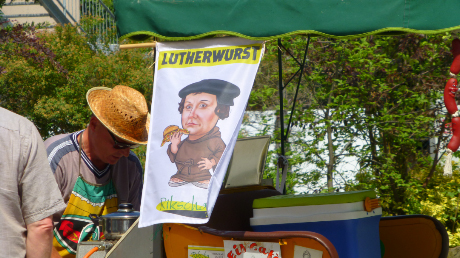 |
 |
| No, we didn't try one. | A little PlayMobil toy, similar to Legos. Chuck just had to have one. The shop also had Luther socks emblazoned with (what else?) "Here I Stand," quoting Luther's famous refusal to abandon his ideas in front of the Pope. |
We also made a late-afternoon stop at the village of Torgau, where our guide assured us that local residents were NEVER seen outside in the evening and that we should not expect to see anyone on our walk. We did see a few people (and cars) but it was very quiet and picturesque. |
|
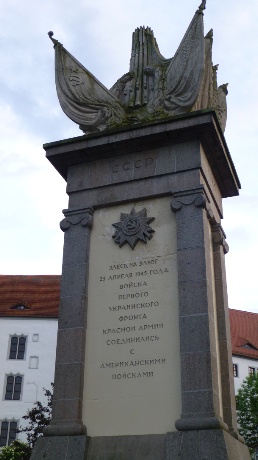 |
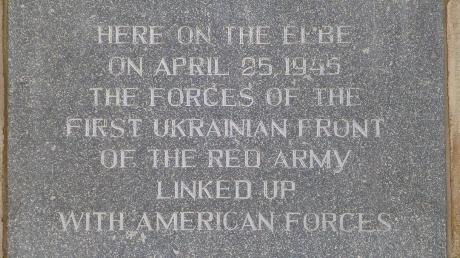 |
| Torgau had significance in WWII as the place where the Allied forces of the East and West joined together, which meant that Nazi Germany was surrounded. Even though Eastern Europe came to despise the Soviets later on, this monument attests to the fact that they were indispensable in winning the war. | |
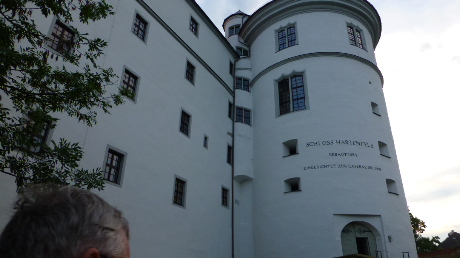 |
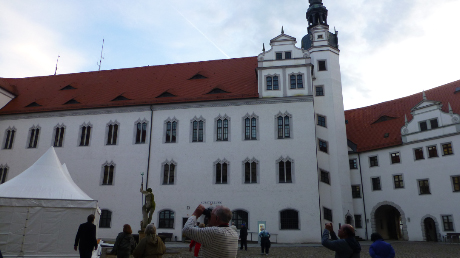 |
| The dominating feature of Torgau is its Hartenfels castle, which was built in the early Renaissance and became an important refuge for early Protestants in Germany. | |
 |
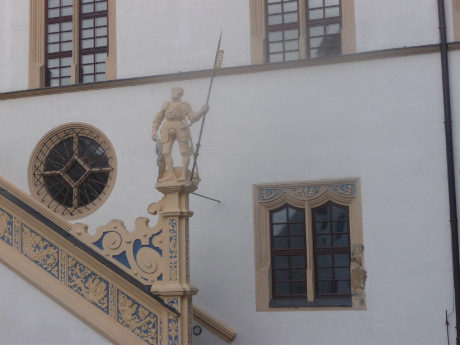 |
| One of the castle's most unusual features is a spiral stone staircase that has no central support. The stone sort of layers on itself to provide structural stability. | The decoration of the castle is typically Renaissance. |
 |
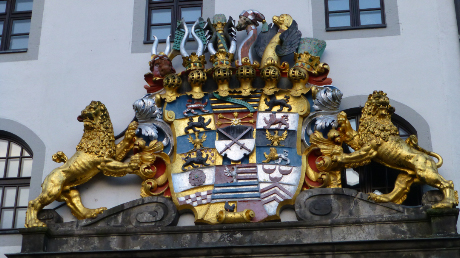 |
| The entrance to the staircase is decorated with the coats of arms of various guilds and scenes from the early history of the Reformation. | The coat of arms of the Prince of Saxony has been beautifully restored. |
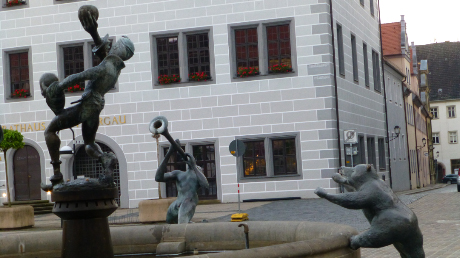 |
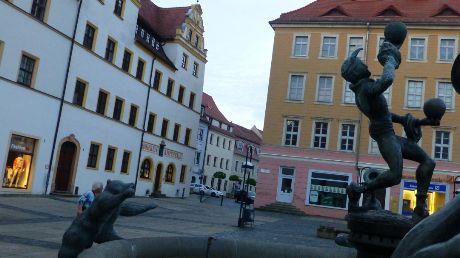 |
| The central square of Torgau was, as promised, virtually empty that evening. This was completely different from the other places we visited, which had lots of restaurants and shops in the square. The Torgau fountain shows bears trying to jump into the water--bears were a symbol of the Prince of Saxony and three live bears are still kept in the (drained) moat of the castle. | |